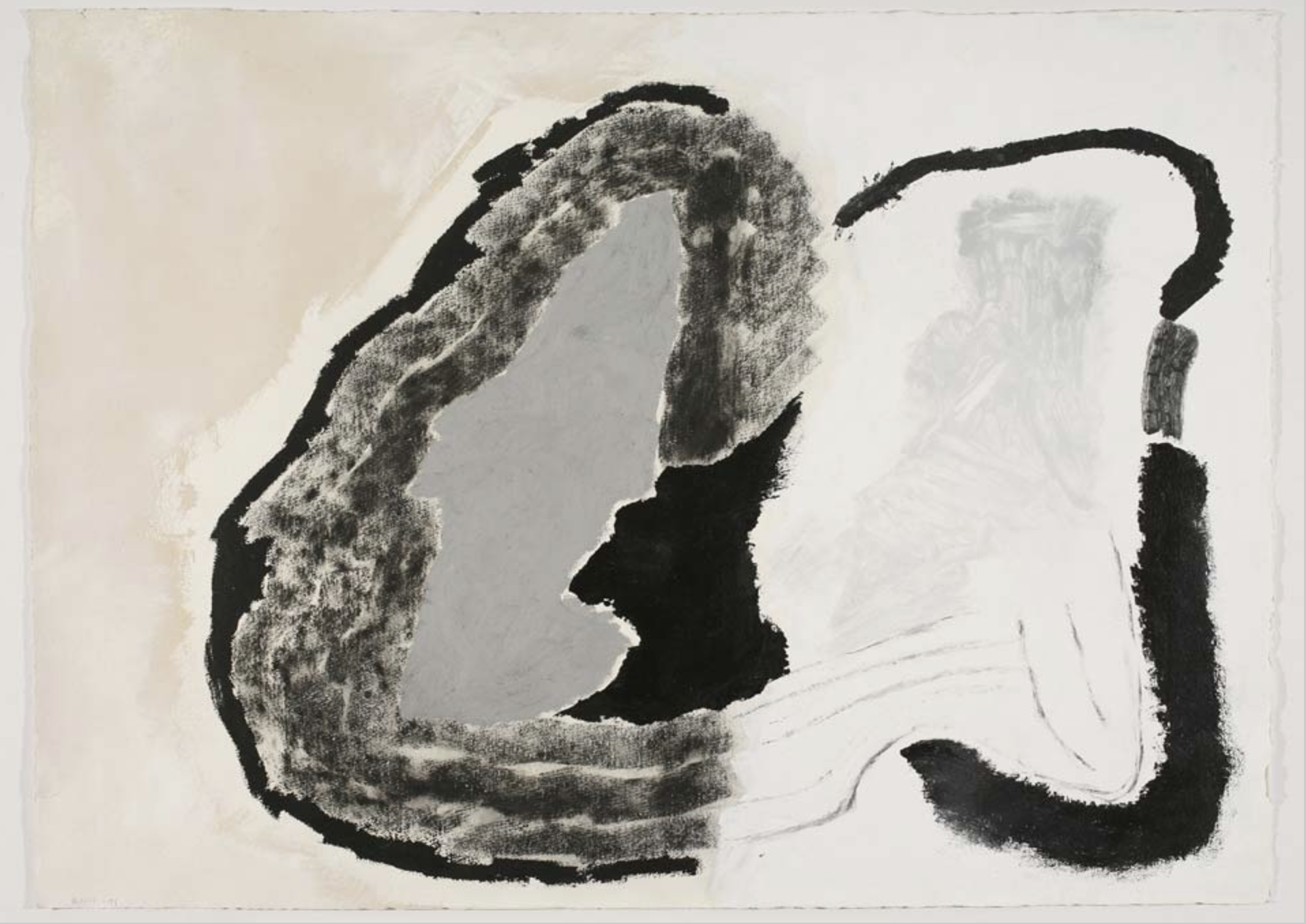studies
‘Folded Starta’
Trevor Bell
1991
Of late, I have found myself seeking to express a more contemplative and conceptual exploration of the parallels between my Zen practice, the experience of psychological transformation and the personal universe created through art, which inspires me. In response to this curiosity I have looked to the art work of Trevor Bell (1930–2017).
Bell was an artists whose work was anchored in emotion and in his personal response to the world. What he created were abstract, vibrating, forceful, rich and fluid atmospheres which capture a sense of a place as experienced with his intuition and sensibility, as much as his body and senses. ‘Folded Strata’ (above), from his Himalaya collection of works on paper, does not depict the mountain range and structure. Whilst folded forms are seen, it alludes to the shaping of time as well as land, in they way vast geological vistas connect us with a life far outstretching our own. The painting transports us into his sensation of being engulfed in rock and snow and light. What we experience when viewing it is his sensation of seeing the land, his sensation of experiencing it.
What inspires me about Bell’s way of painting the world, is how his experience resonates through us when viewing them. His works are spiritual in the way they connect us to the intuitive, abstract forces that exceed material reality. They are the forming of intangible feelings, not just his own, but those that we share with him through the human experience… awe, force, power, interconnectedness, chaos, hopefulness, joy.
In an essay about Trevor Bells ‘Both Ends of the Stream’ collection of 2000, Lynne Green quotes Jacquetta Hawkes* -
“Human beings are, it seems, irresistibly attracted to those places where nature has not become passive but is still full of force and the possibility of movement.”
As she draws the lines between Bell’s forceful depictions of wild landscapes and our desire to seek them out, I wonder if it is in recognition of our own force and transience that these places pull us. Bell seems to have articulated the intuitive connection we have to these places in his art. His paintings are a continuous dance of heavy forms and soft ones, receding tones and luminous edges, pulsing colours and silence. With the co-existence of these energies in his work, they become akin to the universe, and our viewing of them reflects the deciphering, grasping of its meaning. Yet it is through the melting of their meaning that we connect with and step into his works, as we would abandon analysing the expanse of the ocean or the clouds falling over the Himalayan range, so that we could just ‘be’ there, existing with it.
*Jacquetta Hawkes, A Land (1951)
Browse more art works at www.trevorbellartist.com
